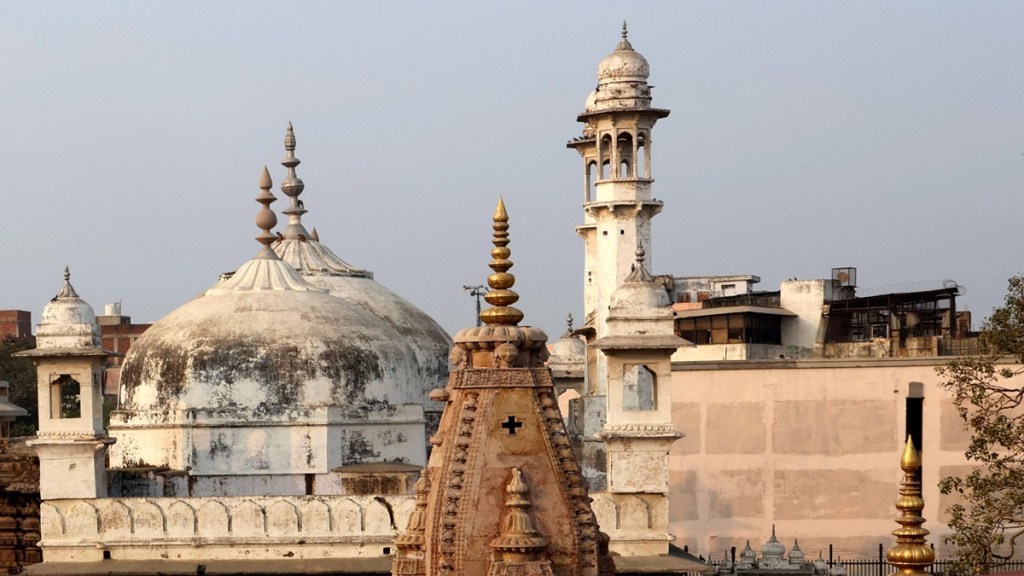Hindu women plaintiffs moved the Supreme Court seeking a directive to the Archaeological Survey of India (ASI) for a thorough examination of a ‘Shivling’ discovered within Gyanvapi mosque’s sealed area in Varanasi.
In a separate application, four Hindu women, the original petitioners in the ongoing case in the Varanasi court, also sought the overturning of the Supreme Court’s May 19, 2023, order, which deferred a scientific survey, including carbon dating, as directed by the Allahabad High Court on May 12, 2023.
Also Read:Two ‘Vishnu’, ‘Ganesha’, 15 ‘Shivling’ sculptures found inside Gyanvapi mosque premise: ASI report
Advocate Vishnu Shankar Jain, representing the plaintiffs, argued upon need to determine the ‘Shivling’s’ nature by removing modern walls and floors surrounding it. The application urges the ASI to conduct excavation and scientific surveys of the sealed area, submitting a report within the court’s stipulated time.
The plaintiffs argue that excavation and scientific investigation are essential to unveil the original structure of the ‘Shivling’ and its associated features. This follows a Varanasi court’s decision to provide the ASI survey report on the Gyanvapi mosque complex to both Hindu and Muslim parties involved in the dispute.
Jain claimed that the ASI’s scientific survey indicated that the mosque was constructed upon the remnants of a pre-existing temple. The recent applications come after a May 16, 2022, discovery of a substantial ‘Shivling’ beneath a pond during a court-ordered survey.
Also Read:ASI submits sealed report on Gyanvapi mosque survey in Varanasi court
“It is submitted that for a proper and effective investigation, it is necessary that the ASI may be directed to undertake necessary excavation and use other scientific methods around the Shiva Lingam (being claimed by Muslims as a fountain) for determining the nature of Shivlingam and associated features without causing any damage to the object after removing artificial/modern walls/floors surrounding the Shiva Lingam,” it said, as PTI reported.
The plaintiffs assert that the ‘Shivling’ found holds significance for Hindus and Lord Shiva devotees, demanding the right to worship and perform rituals. They call for the ASI to survey the entire sealed area, arguing that failure to do so would undermine the survey’s purpose.
Also Read:Days after ASI report made public, VHP says ‘hand over the Gyanvapi structure to Hindus’
The contentious issue centers on whether the object discovered is a ‘Shivling’ or a fountain, requiring a scientific investigation by the ASI. The plaintiffs highlighted the necessity for the ASI to examine the sealed area, contending that the ASI’s prior surveys excluded this critical section.
The ASI has been urged to determine the ‘Shivling’s’ nature and associated features without causing damage, particularly as the area is surrounded by modern walls unrelated to the original structure. The plaintiffs argue that the disputed area holds no religious significance for Muslims, who claim it to be a fountain.
In a recent report by the ASI, 55 stone sculptures, including 15 “Shiva linga,” were discovered within the premises of the Gyanvapi mosque, as reported by The Indian Express. The findings included three sculptures depicting Lord Vishnu, Ganesha, two of Nandi, two of Krishna, and five of Hanuman within the mosque premises. Additionally, a sculpture of Lord Krishna, measuring 15 cm in height, 8 cm in width, and 5 cm in thickness, made of sandstone, was unearthed during the survey. This particular sculpture, belonging to the late medieval period, was located in the eastern side of cellar S2.
Despite objections from the Muslim side, the Supreme Court, on August 4, 2023, refused to stay the Allahabad High Court’s order for an ASI survey of Varanasi’s Gyanvapi mosque. The court directed the ASI not to carry out invasive acts during the survey, focusing on whether the 17th-century mosque was built atop a Hindu temple. The mosque ‘wuzukhana,’ featuring the contested ‘shivling,’ was excluded from the survey following a May 17, 2023, court order protecting that specific spot in the complex.
The underlying dispute revolves around claims by Hindu activists that a temple existed on the site, demolished in the 17th century under the orders of Mughal emperor Aurangzeb.

